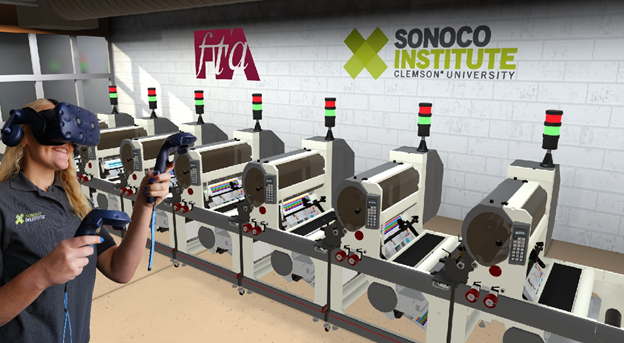Some people face a problem with machinery and feel stumped, unsure why a machine isn’t working as expected or how to improve its performance. Frustrated, they walk away and call for help. However, flexographic training offers a critical foundation to understand and resolve these challenges before seeking external support.
We want to give a huge shout-out of recognition and appreciation to Richard Heaps, Technical Sales Rep at Anderson & Vreeland Canada, who is retiring in February 2025. With an innate ability for troubleshooting, problem-solving, and solution-finding, Richard approaches each problem with fresh perspectives. His technical background and flexographic training help him identify opportunities for innovation, whether it’s rethinking existing products or designing new solutions. For Richard, the mechanics of flexographic machinery are second nature, and he loves collaborating with customers to tackle complex challenges.

The Role of Flexographic Training in Problem-Solving
“I know that people without electrical or mechanical backgrounds can be intimidated by many of the machines we use in flexographic printing,” says Richard. “It looks straightforward, but there’s a lot going on beneath the surface.”
Through flexographic training, press operators and business owners gain the tools to understand their machines better, helping them identify issues before they escalate. For example, Richard identified a need for an automated mechanism to lift the top of an Orbital-X plate processor. Thanks to his hands-on experience and in-depth knowledge, he designed a solution that was soon offered as an option on Anderson & Vreeland-built machines.
Tackling Complex Challenges with Flexographic Training
Some problems require more than just basic machine knowledge—they demand a deep understanding of how interrelated processes work. This is where flexographic training truly shines. For instance, one customer experienced an intermittent electrical fault that was hard to trace. Richard, utilizing his experience and training, suspected a poor connection. After a day spent inspecting wire bundles, he found the buried connection that was shorting out and potentially leading to an electrical fire.
Richard’s two decades in the industry, combined with extensive flexographic training in Lean Six Sigma and performance optimization, allow him to methodically analyze problems, eliminate irrelevant factors, and pinpoint the root cause.

The Human Side of Flexographic Training
But Richard’s skills aren’t just technical. His ability to connect with people is what makes his flexographic training so effective. In one case, a customer struggled with staff buy-in after installing a new system. Richard worked closely with the resistant employees, helping them understand the benefits of the new technology. After a few jobs, the staff realized the new process was a good move, and resistance disappeared.
“My years in the industry give me perspective on people, technologies, and processes,” says Richard. “Whether it’s mechanical, electrical, or about helping people adapt to change, flexographic training always plays a role in moving forward.”
